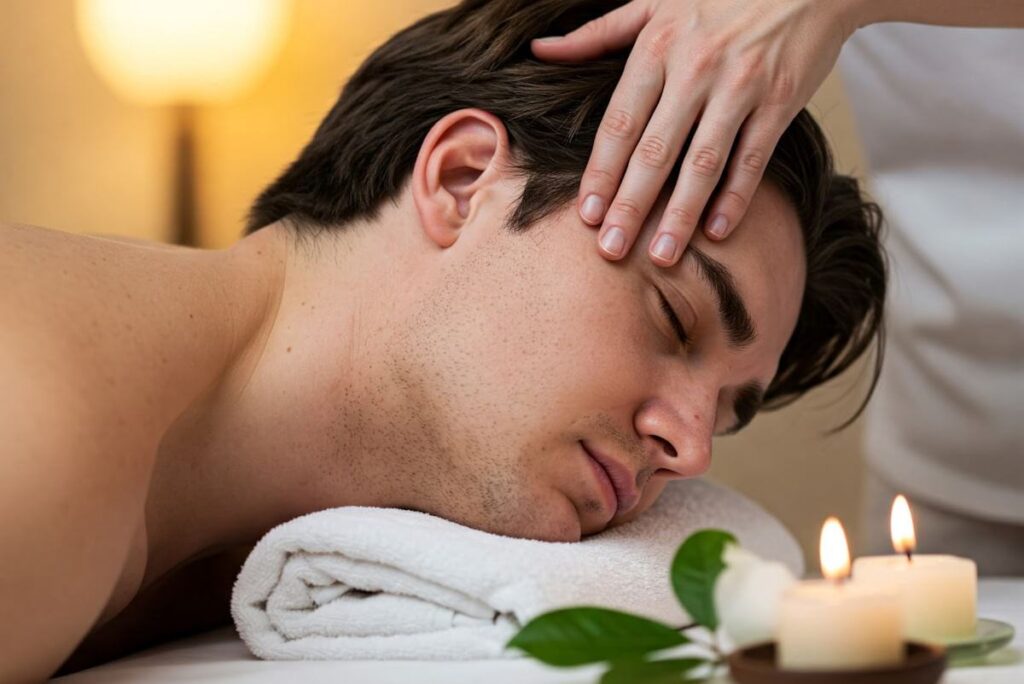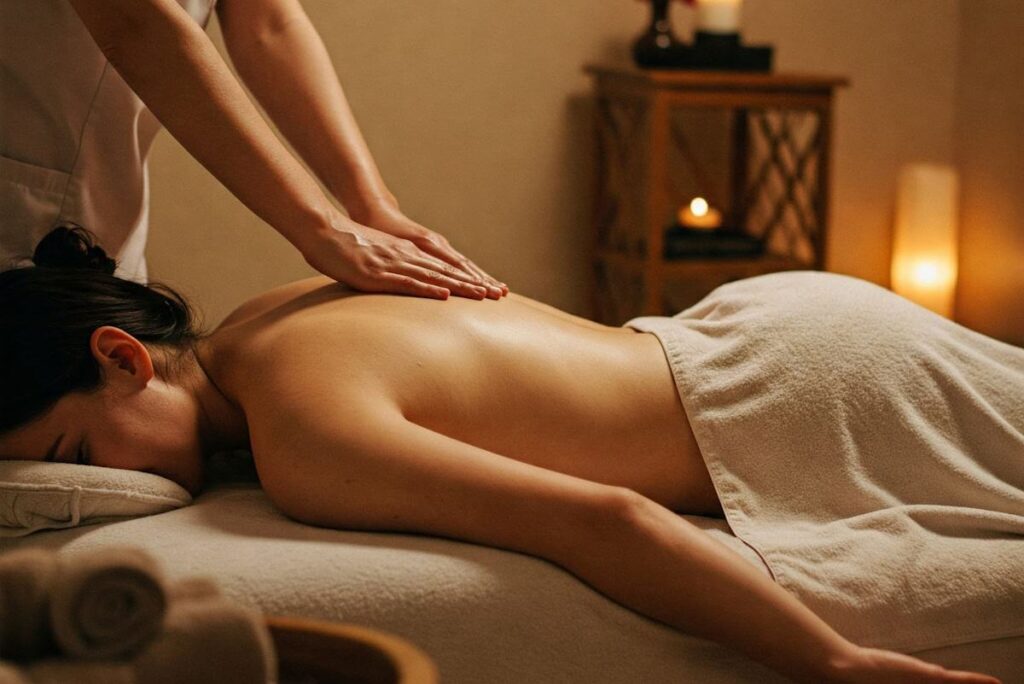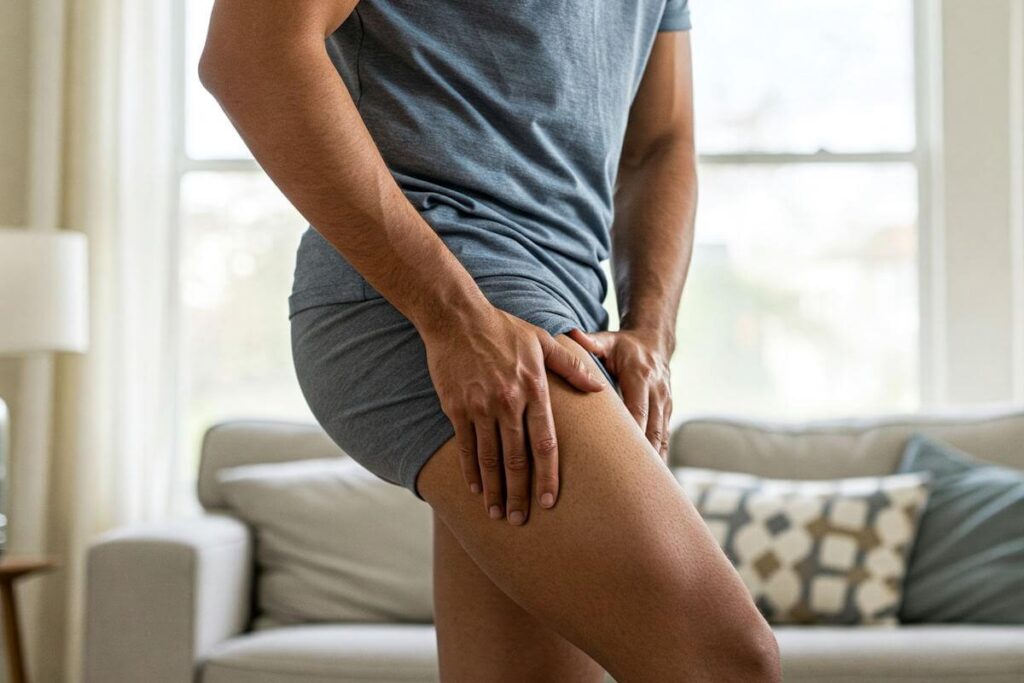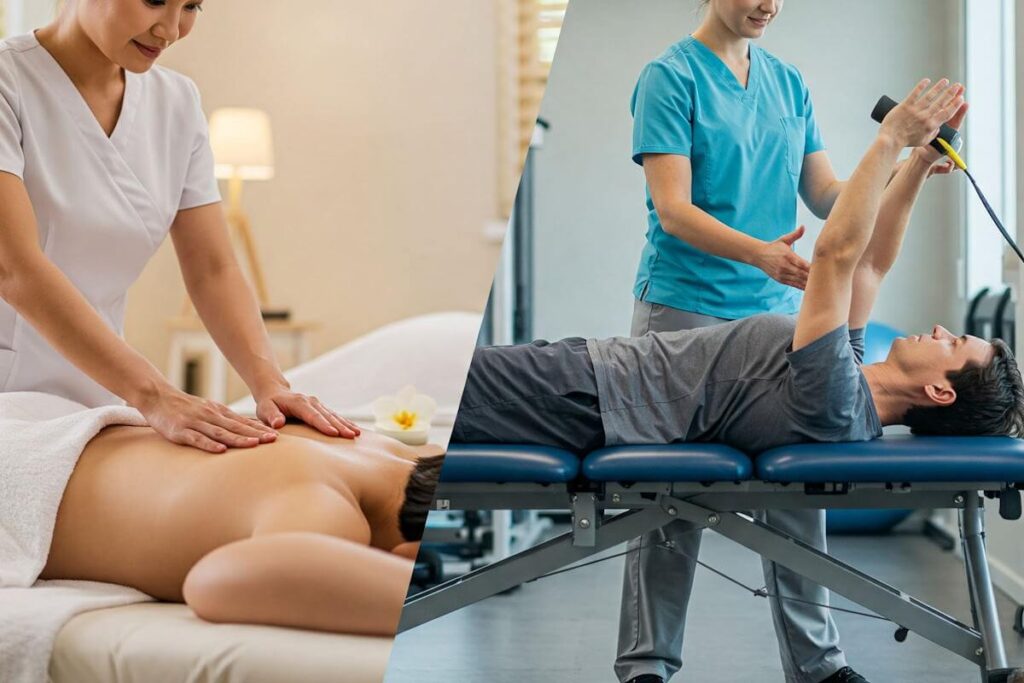Understanding Headaches and Their Causes
Headaches are a prevalent health issue, influencing millions of people worldwide. They can be classified into several types, with tension headaches and migraines being among the most common. Tension headaches are typically characterized by a dull, aching pain that often feels like a tight band around the head. In contrast, migraines are usually more severe and can be accompanied by symptoms such as sensitivity to light, nausea, and visual disturbances.
The causes of tension headaches largely revolve around lifestyle factors. Stress is a significant contributor, causing muscle tension in the neck and scalp that triggers pain. Additionally, poor posture can exacerbate this tension, especially in individuals who spend long hours at desks or using computers. Muscle tension, stemming from various activities or prolonged physical strain, can lead to the development of headaches as well, making it crucial to recognize the alert signs the body sends.
On the other hand, migraines are believed to have a more complex physiological mechanism that may involve genetic predisposition, hormonal changes, and neurological factors. For instance, the dilation of blood vessels in the brain can generate severe pain. Other triggers include environmental factors such as weather changes, certain foods, and hormonal fluctuations, further complicating the understanding of this painful condition.
Understanding these types and their triggers forms the foundation for exploring effective treatment options, including the therapeutic benefits of massage. Massage therapy can specifically target muscle tension, enhance circulation, and promote relaxation, making it a valuable tool for individuals seeking to mitigate the impact of headaches, particularly tension-type headaches and migraines.
The Benefits of Massage for Headaches
Massage therapy is increasingly recognized as an effective treatment for alleviating headaches, particularly tension headaches and migraines. One of the primary benefits of massage is its ability to evoke the relaxation response, which is essential in combating the physical and emotional strain that often accompanies headache disorders. Through the application of various techniques, massage promotes a state of deep relaxation, reducing muscle tension, stress, and anxiety that can trigger headache episodes.
Another significant benefit of massage for individuals suffering from headaches is the enhancement of blood circulation within the affected areas. As the therapist applies pressure and manipulation to the neck, shoulders, and head, blood flow increases, which can contribute to relieving pain and discomfort. Improved circulation helps deliver nutrients and oxygen to the muscles and tissues while facilitating the removal of toxins, thus promoting overall healing and wellness.
Moreover, massage effectively relieves muscle tension, particularly in the areas most susceptible to headache pain. Tension in the neck and shoulders is often a common precursor to headache symptoms, and targeting these muscle groups through massage can lead to considerable relief. By reducing tightness and promoting muscle elasticity, massage therapy not only alleviates immediate discomfort but also helps prevent future headaches from occurring.
In addition to these physical benefits, massage can contribute to enhanced overall well-being. Regular massage sessions may reduce stress levels, improve sleep quality, and encourage a sense of relaxation and clarity. This cumulative effect can lower the frequency and intensity of headaches, ultimately allowing individuals to experience a more balanced, pain-free life. Employing massage as a complementary therapy offers a natural means of managing headache symptoms and improving overall health.
Different Types of Massage Techniques for Relief
Headaches can be debilitating, but various massage techniques have been shown to provide effective relief from this common ailment. Understanding these methods and their efficacy can empower individuals to choose the right approach for alleviating headache symptoms. Among the most notable techniques are trigger point therapy, Swedish massage, deep tissue massage, and acupressure.
Trigger point therapy focuses on specific, hyper-irritable areas within muscles that can contribute to pain in various parts of the body, including headaches. By applying targeted pressure to these points, the therapist seeks to release tension and improve blood circulation, leading to a reduction in headache intensity. This technique can be particularly beneficial for those suffering from tension headaches, as it addresses the root causes of muscle tightness and discomfort.
Swedish massage, characterized by its gentle and rhythmic strokes, aims to promote overall relaxation and reduce stress levels. This technique not only enhances circulation but also alleviates muscle tension, which can be a significant contributor to headaches. By promoting relaxation and calming the nervous system, Swedish massage can help prevent the occurrence of headaches while providing immediate relief when they arise.
Deep tissue massage, on the other hand, employs firmer pressure and slower strokes to target deeper layers of muscle and connective tissue. It is particularly effective for patients with chronic headaches linked to muscle stiffness and stress. By relieving tension in the neck, shoulders, and upper back, deep tissue massage can alleviate pressure points that trigger headaches.
Lastly, acupressure, an ancient healing technique rooted in Traditional Chinese Medicine, involves applying pressure to specific points on the body to stimulate energy flow and promote healing. Research suggests that acupressure may effectively alleviate various types of headaches, including migraines, by addressing the underlying energy blockages and balancing bodily functions.
Self-Massage Techniques You Can Try at Home
Finding relief from headaches can often seem overwhelming, but self-massage offers a practical and effective way to alleviate tension and discomfort. Below are step-by-step instructions for several self-massage techniques that can be easily performed at home, focusing on key areas such as the neck, shoulders, temples, and scalp. These methods empower individuals to take proactive measures in managing headache symptoms.
1. **Neck Massage**: Start by sitting comfortably in a chair with your back supported. Use your fingers to gently knead the muscles at the base of your skull, applying steady pressure in circular motions. Gradually move down to the sides of your neck, using your thumbs to push against the knots in your muscles. Perform this massage for about 3-5 minutes, focusing on areas that feel particularly tight. This technique helps to relieve tension that often contributes to headache pain.
2. **Shoulder Massage**: While still seated, reach over your shoulder with one hand to grasp the opposite shoulder. Apply pressure using your fingertips to knead the muscle near the top of your shoulder, moving in a circular motion. Switch sides and repeat the process for another 3-5 minutes. This action helps loosen tight muscles that may be radiating pain to the head.
3. **Temple Massage**: Using your index and middle fingers, apply gentle pressure to your temples. Move in small circles for about 1-2 minutes, followed by a light tapping motion to stimulate circulation. This method can be particularly soothing and may ease tension headaches.
4. **Scalp Massage**: To finish, use the pads of your fingers to massage your scalp, starting from the hairline and working your way back. Focus on small circular motions and apply varying pressure for 3-5 minutes. This technique promotes relaxation and can significantly improve headache relief.
By incorporating these self-massage techniques into one’s routine, individuals can effectively manage headaches and experience greater overall well-being.
When to Seek Professional Help
While massage therapy can provide significant relief for tension headaches and migraines, there are situations where professional medical consultation becomes imperative. Recognizing when a headache requires further evaluation is essential for ensuring optimal health and well-being. Certain signs can indicate the possibility of a more serious underlying condition, which may necessitate immediate attention from healthcare professionals.
Headaches that are suddenly severe or accompanied by other unusual symptoms—such as vision changes, confusion, loss of consciousness, or difficulty speaking—should not be ignored. These symptoms can suggest serious conditions like a stroke, aneurysm, or other neurological issues. If headaches are persistent and worsen over time, or if they are consistent and change in their typical pattern, seeking medical advice is advisable. Individuals experiencing headaches alongside fever, stiff neck, or rash may be signs of infections such as meningitis, requiring urgent care.
Moreover, if headaches disrupt daily activities or lead to increased reliance on pain medications, it is important to consult a healthcare professional. This can help in determining potential underlying causes that may need to be addressed through different treatment approaches. A healthcare provider can offer a comprehensive assessment, which may include diagnostic imaging or blood tests, to rule out any serious health issues.
Integration of massage therapy can be beneficial as part of a holistic treatment plan, but it is crucial to address any serious medical concerns first. By recognizing warning signs and promptly consulting with a professional, one can create a balanced strategy that includes both therapeutic massage and necessary medical management for effective headache relief.
Complementary Therapies to Enhance Massage Relief
Massage therapy is widely recognized for its ability to alleviate headache pain, particularly tension headaches and migraines. However, integrating complementary therapies can significantly enhance the overall effectiveness of massage. Three noteworthy options include aromatherapy, heat therapy, and mindfulness meditation.
Aromatherapy utilizes essential oils derived from plants to promote physical and emotional well-being. When combined with massage, certain oils, such as lavender or peppermint, may assist in reducing headache symptoms. The inhalation of these oils can create a soothing environment, potentially elevating relaxation during the massage, and fostering a deeper state of tranquility. Selecting the right essential oil can also address specific headache types. For example, eucalyptus oil may help relieve sinus pressure headaches, while chamomile can be beneficial for tension headaches.
Heat therapy is another effective complementary approach that can enhance the relief provided by massage. Applying warmth to targeted areas, such as the neck and shoulders, can help relax tight muscles and improve blood circulation. This increased blood flow not only aids in relieving headache pain but also enhances the effectiveness of the massage itself. Warm compresses or heating pads can be applied prior to or during a massage session to maximize comfort and alleviate discomfort simultaneously.
Mindfulness meditation is also a powerful tool in managing headaches. By focusing on the present moment and reducing stress levels, individuals may learn to better cope with headache triggers. Integrating short mindfulness exercises before or after a massage can promote a heightened sense of awareness and relaxation. This practice may offer a holistic approach to headache management, reinforcing the benefits obtained from the massage therapy itself.
In conclusion, combining massage therapy with complementary treatments like aromatherapy, heat therapy, and mindfulness meditation creates a comprehensive approach to managing headache pain. These methods can work in synergy, ensuring a more effective relief experience.
Lifestyle Changes to Prevent Headaches
Preventing headaches is largely reliant on implementing positive lifestyle modifications that can enhance overall well-being. One crucial element is maintaining proper hydration. Dehydration is a common trigger for headaches; thus, ensuring adequate fluid intake throughout the day can significantly reduce their frequency. Individuals are generally encouraged to drink at least eight 8-ounce glasses of water daily, adjusting for activity levels and climate conditions.
Nutrition also plays an essential role in headache prevention. A balanced diet, rich in fruits, vegetables, whole grains, and lean proteins can help avoid headache triggers like processed foods or excessive sugar. Certain foods, such as aged cheeses, chocolates, and caffeine, should be consumed in moderation. Keeping a food diary may also help identify specific dietary triggers related to individual headaches.
Regular physical activity is another key lifestyle change for headache prevention. Engaging in consistent exercise, such as walking, swimming, or yoga, can improve circulation and reduce the overall stress levels that contribute to tension headaches. Moreover, physical activity encourages the release of endorphins, natural pain-relievers that can counteract headache pain.
Establishing proper sleep patterns is paramount in avoiding headaches. Maintaining a consistent sleep schedule, aiming for 7-9 hours each night, is essential. Creating a conducive sleep environment free from disruptions can significantly improve sleep quality. An awareness of posture is equally important; poor posture, especially when sitting for prolonged periods, can lead to tension in the neck and shoulders, often resulting in headaches. Simple adjustments, like using ergonomic furniture and taking regular breaks, can alleviate this strain.
Incorporating these lifestyle changes can not only aid in headache prevention but also work effectively in conjunction with massage therapy, leading to optimal headache management strategies. By being diligent and mindful of these factors, individuals can significantly reduce the occurrence and severity of headaches.
Personal Testimonials and Success Stories
Many individuals have discovered the profound benefits of massage as a natural remedy for headaches, leading to life-changing experiences. For instance, Jane, a 32-year-old marketing professional, struggled with chronic tension headaches for years. Despite trying various medications, nothing seemed to provide lasting relief. After seeking out a licensed massage therapist who specialized in trigger point therapy, she experienced significant improvement. The therapist focused on the neck and shoulder areas, which helped release muscle tension. Jane reports that after a few sessions, her headaches became less frequent and less severe, allowing her to manage her work and personal life more effectively.
Another success story comes from David, a 45-year-old graphic designer whose migraine episodes disrupted his daily activities. After researching alternative treatments, he decided to try a combination of deep tissue and aromatherapy massage. The application of essential oils during the sessions helped reduce his stress levels, while the deep tissue techniques alleviated the tension building in his back and neck. David found that following a regular massage schedule significantly decreased the frequency and intensity of his migraines. He noted an unexpected bonus: the sessions also improved his overall mood, fostering greater creativity in his work.
Lastly, Sarah, a retiree, shares her experience with prenatal massage therapy during her pregnancy. Initially, she faced debilitating headaches attributed to hormonal changes. Helping her navigate these challenges was a massage therapist who employed gentle techniques like Swedish massage, focusing on relaxation and stress relief. Sarah was pleasantly surprised by the remarkable reduction in headache occurrence, coupled with an enhanced sense of well-being. These diverse testimonials reflect how various massage techniques can cater to individual needs, illustrating the positive impact they can have on one’s quality of life.
Conclusion: Empowering Your Headache Relief Journey
In summary, the effectiveness of massage as a natural relief option for headaches cannot be overstated. Throughout this blog post, we have explored various massage techniques, such as trigger point therapy, Swedish massage, and acupressure, all of which can provide significant alleviation for tension and migraine headaches. These methods work by targeting specific muscle groups and enhancing blood flow, thereby reducing pain and promoting relaxation. Additionally, we emphasized the importance of incorporating these techniques into a consistent self-care routine to maximize their benefits.
Moreover, we have highlighted the necessity of complementing massage therapy with other lifestyle adjustments. Adequate hydration, regular exercise, and proper ergonomics in daily activities contribute to headache prevention. Similarly, maintaining a balanced diet and managing stress through mindfulness and adequate sleep plays a crucial role in reducing the frequency and severity of headache episodes. Therefore, it is essential for individuals experiencing chronic headaches to adopt a holistic approach that includes both massage and these healthier lifestyle choices.
For those interested in exploring massage therapy, it may be beneficial to seek guidance from a licensed professional who can tailor the treatment to your specific needs. Additionally, practicing self-massage techniques at home can empower you in managing headaches proactively. By incorporating these strategies, you can take significant steps toward breaking the cycle of headache pain and improving your overall well-being.
Ultimately, understanding the role of massage therapy in headache relief arms you with the tools necessary to improve your quality of life. We encourage you to experiment with different techniques, listen to your body, and be proactive in your quest for relief. Your journey towards effective headache management starts with informed choices and dedicated practices.




